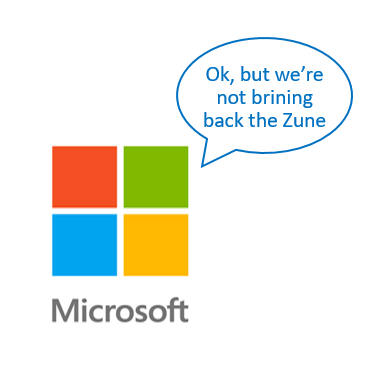It’s Microsoft Paint all over again. The Dynamics 365 for Outlook Client will no longer be deprecated.

It wasn’t that long ago that Microsoft announced it was getting rid of one its most tenured programs MS Paint. You may have thought the single point form note in a list of 2017 fall features would have gone as unread as a Terms of Service Agreement after setting up your new Ipod, but people noticed. And with the uproar of thousands of Microsoft users the 32 year old MS Paint was removed from the chopping block just 1 day later. Perhaps this incident stole the spotlight as at the same time they announced they would be deprecating the Dynamics 365 for Outlook Client (add-in). Maybe it took us longer to notice, maybe it took a bit longer for Microsoft to come around but today they officially announced they will continue to support the Dynamics 365 for Outlook Client.
Below: From Microsoft’s customer Engagement Team Blog – January 29, 2018
Continued support for Outlook add-in (Dynamics 365 for Outlook)
In June 2017, we announced the deprecation of Dynamics 365 for Outlook (otherwise known as the “Outlook add-in”) and the plan to replace it with Dynamics 365 App for Outlook. The deprecation announcement meant that although Dynamics 365 for Outlook would continue to be supported, it would be removed in Dynamics 365 version 10.0.
Since this announcement, we have received overwhelming feedback from customers, partners, and the Dynamics community around the need for the Outlook add-in. Additionally, we understand that some feature gaps in Dynamics 365 App for Outlook prevent it from being a viable replacement for the Outlook add-in. As a result, we are reversing the deprecation of Dynamics 365 for Outlook.
We want to enable customers who are on older versions of Dynamics 365 to be able to upgrade and not lose core functionalities that their business has come to rely on.
What does this mean?
This announcement means that we will continue to release Dynamics 365 for Outlook with new versions of Dynamics 365. As a result, customers upgrading to a new version of Dynamics 365 will have the same Outlook integration experience as in previous versions.
The Outlook add-in will also continue to be fully supported in current and future versions of Dynamics 365, and bugs will continue to be fixed. Additionally, we are making improvements to the performance and reliability of the Outlook add-in to ensure fewer problems for customers.
From a functionality standpoint, all current scenarios will continue to be supported; we are not planning to add any new features.
What does this mean for Dynamics 365 App for Outlook?
We are still increasing our investment in Dynamics 365 App for Outlook. This means fixing the functionality gaps between the Outlook add-in and Dynamics 365 App for Outlook, so customers have a viable alternative for core business scenarios.
The reversal of the deprecation of Dynamics 365 for Outlook does not change the fact that COM add-ins (like Dynamics 365 for Outlook) are an older and slower technology. Dynamics 365 App for Outlook is based on newer Office add-in technology. This is an area where the Outlook team is also investing heavily. Unlike COM add-ins, Office add-ins do not have any code physically installed on the user’s device or on the Outlook client. They are easier to deploy and maintain, much more reliable, and work across platforms.
We encourage our customers to adopt Dynamics 365 App for Outlook, which is a modern Office add-in, and hope that those who have already migrated are able to see the benefits of this modern user experience in terms of interaction as well as deployment.
For more information on Dynamics 365 App for Outlook, see the Dynamics 365 App for Outlook User’s Guide.
Palak Kadakia and Srihari Srinivasa
Dynamics 365 team
